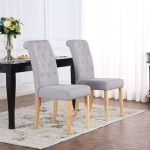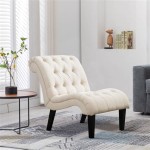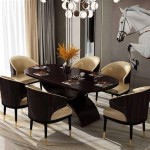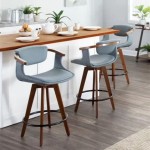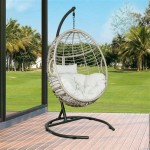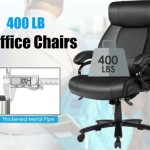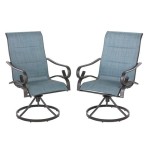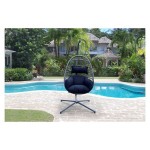The Enduring Appeal of the Leather Mid-Century Modern Chair
The mid-century modern aesthetic, characterized by clean lines, organic shapes, and a focus on functionality, gained prominence in the decades following World War II. This design movement extended beyond architecture and found expression in furniture, particularly chairs. Among the most coveted pieces of mid-century modern furniture is the leather chair, a symbol of both style and comfort that continues to resonate with designers and homeowners today. The leather mid-century modern chair represents a convergence of form and materiality, offering a sophisticated seating solution that transcends fleeting trends.
The enduring popularity of these chairs stems from a variety of factors, including their inherent versatility, durability, and visual appeal. Leather, as a material, imbues these chairs with a sense of luxury and refinement while also providing a comfortable and supportive seating experience. The careful craftsmanship and attention to detail evident in many vintage and contemporary leather mid-century modern chairs contribute to their lasting value and desirability. The ability to seamlessly integrate into diverse interior styles, from minimalist to eclectic, further cements their position as a timeless design choice.
Key Design Elements of Leather Mid-Century Modern Chairs
Several key design characteristics define the leather mid-century modern chair. These elements contribute to the overall aesthetic and functionality of the piece, distinguishing it from other chair styles. Understanding these features is crucial for appreciating the design principles and making informed purchasing decisions.
First, the emphasis on clean lines and simple silhouettes is paramount. Designers during this period often favored minimalist forms, eschewing excessive ornamentation in favor of showcasing the natural beauty of the materials. This translates into chairs with sleek profiles, often featuring gently curved lines and a lack of elaborate detailing. The focus is on the essential structure and the interplay of different materials, such as leather, wood, and metal. The absence of unnecessary embellishments allows the chair to blend seamlessly into a variety of interior settings, adding a touch of understated elegance without overwhelming the space.
Second, the incorporation of organic shapes and natural materials is a hallmark of mid-century modern design. Leather, being a natural material, aligns perfectly with this design philosophy. The use of wood, often in the form of tapered legs or exposed frames, further enhances the organic feel. The shapes themselves are often inspired by nature, with curves and contours that mimic natural forms. This creates a sense of visual harmony and contributes to the overall comfort of the chair. The juxtaposition of the smooth, supple leather with the warm, tactile wood creates a pleasing sensory experience.
Third, functionality is a core principle of mid-century modern design. Chairs are not merely objects of aesthetic beauty; they are designed to be comfortable and practical for everyday use. This translates into chairs with ergonomic considerations, providing adequate support and promoting good posture. The seat height, back angle, and armrest placement are all carefully considered to ensure a comfortable seating experience. The use of durable materials, such as high-quality leather and sturdy wood frames, ensures that the chair can withstand regular use and maintain its structural integrity over time. This emphasis on functionality makes leather mid-century modern chairs a practical and stylish choice for any home or office.
Finally, the use of exposed frames, particularly in wood, is a common characteristic. This design element highlights the craftsmanship and construction of the chair, showcasing the joinery and the natural grain of the wood. The exposed frame can be a focal point of the design, adding visual interest and a sense of transparency. This also allows for a greater appreciation of the materials used and the skill of the artisan who created the chair. The combination of the leather upholstery with the exposed wood frame creates a visually appealing contrast and adds to the overall sophistication of the piece.
Types of Leather Used in Mid-Century Modern Chairs
The type of leather used in a mid-century modern chair significantly impacts its appearance, durability, and overall feel. Different types of leather possess distinct characteristics that influence the chair's aesthetic appeal and performance. Understanding these differences is essential for selecting a chair that meets specific needs and preferences.
Full-grain leather is considered the highest quality leather available. It is made from the entire grain of the hide, retaining all of the natural markings and variations. This type of leather is known for its durability and develops a rich patina over time, adding to its character and beauty. Full-grain leather is also breathable, making it comfortable to sit on for extended periods. Chairs upholstered in full-grain leather are often more expensive due to the higher cost of the material and the meticulous craftsmanship required to work with it. However, the investment is often justified by the longevity and aesthetic appeal of the chair.
Top-grain leather is another high-quality option, although it is slightly more processed than full-grain leather. It involves sanding away the top layer of the hide to remove imperfections, resulting in a more uniform appearance. While top-grain leather is still durable and comfortable, it does not develop the same rich patina as full-grain leather. It is often more affordable than full-grain leather, making it a popular choice for those seeking a balance between quality and cost. Top-grain leather is available in a variety of finishes and colors, offering versatility in design.
Corrected-grain leather undergoes a more extensive processing, involving sanding, buffing, and embossing to create a consistent surface. This type of leather is often used in situations where uniformity and durability are priorities. Corrected-grain leather is more resistant to scratches and stains than full-grain or top-grain leather, making it a practical choice for high-traffic areas. However, it lacks the natural variations and breathability of higher-quality leathers. It is often the most affordable option, making it accessible to a wider range of buyers.
Bonded leather is composed of shredded leather fibers bonded together with adhesives. It is significantly less expensive than full-grain, top-grain, or corrected-grain leather. While it can mimic the appearance of genuine leather, it lacks the durability and longevity of higher-quality materials. Bonded leather is more susceptible to cracking and peeling over time. While it might be an attractive option for budget-conscious buyers, it is important to consider its limitations in terms of durability and lifespan.
Integrating Leather Mid-Century Modern Chairs into Interior Design
The versatility of the leather mid-century modern chair allows it to be seamlessly integrated into a variety of interior design styles. Its clean lines, organic shapes, and timeless appeal make it a valuable addition to both contemporary and traditional spaces. The key to successful integration lies in understanding the chair's inherent characteristics and selecting appropriate complementary pieces.
In minimalist spaces, a leather mid-century modern chair can serve as a focal point, adding a touch of warmth and sophistication to an otherwise spartan environment. The clean lines of the chair complement the minimalist aesthetic, while the leather upholstery provides a tactile and visually appealing contrast to the surrounding surfaces. Choosing a chair in a neutral color, such as black, brown, or gray, can further enhance the minimalist feel. Pairing the chair with a simple side table and a floor lamp can create a cozy and inviting reading nook.
In eclectic spaces, a leather mid-century modern chair can serve as a unifying element, tying together disparate design elements. Its timeless appeal allows it to blend seamlessly with a variety of colors, patterns, and textures. Choosing a chair in a bold color or with a unique design can add a touch of personality to the space. Mixing and matching different styles of furniture and accessories can create a visually stimulating and engaging environment. The leather chair provides a grounding element, preventing the space from feeling overly chaotic.
In mid-century modern spaces, a leather mid-century modern chair is a natural fit, complementing the existing design elements and enhancing the overall aesthetic. Choosing a chair that is authentic to the period can add a sense of history and authenticity to the space. Pairing the chair with other mid-century modern furniture, such as a credenza or a coffee table, can create a cohesive and harmonious design. Paying attention to the details, such as the color palette and the materials used, can further enhance the mid-century modern aesthetic.
The addition of textiles can add comfort and visual interest to leather mid-century modern chairs. Throw pillows in complementary colors and patterns can soften the look of the chair and add a touch of personality. A throw blanket draped over the back of the chair can provide warmth and texture. The choice of textiles should be carefully considered to ensure that they complement the overall design of the space. Natural fibers, such as wool or cotton, often work well with leather upholstery.

Contemporary Mid Century Modern Leather Chairs Article

Tub Chair Mid Century Modern Armchair Faux Leather Accent For Living Room

Mid Century Show Wood High Back Leather Chair West Elm

Alden Design Mid Century Modern Faux Leather Wingback Accent Chair Brown

Fillmore Mid Century Leather Chair West Elm

Lounge Chair Leather And Wood Deals

Vintage Brown Leather Accent Chair With Brass Tipped Legs Charmydecor

Chet Leather Mid Century Modern Club Chair

Contemporary Mid Century Modern Lounge Chairs Article

Glenn Walnut Leather Recliner Chair Rejuvenation
